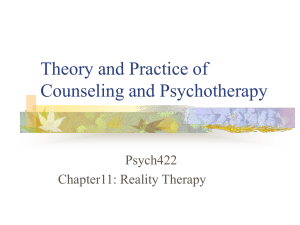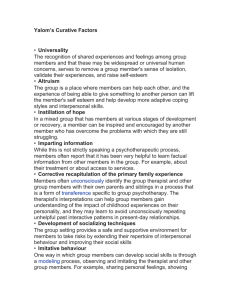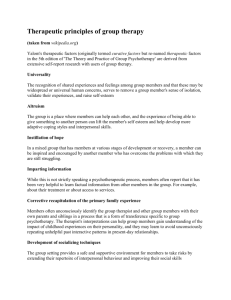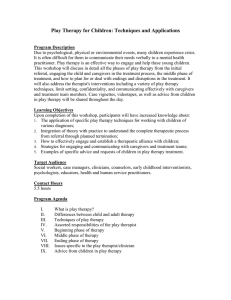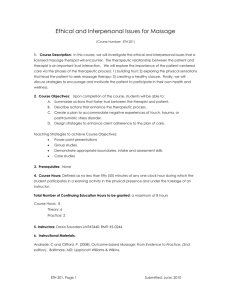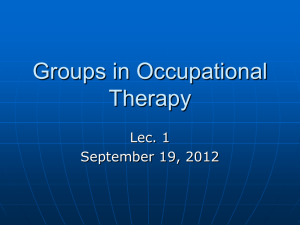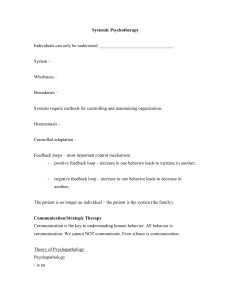Specific IPT techniques
advertisement
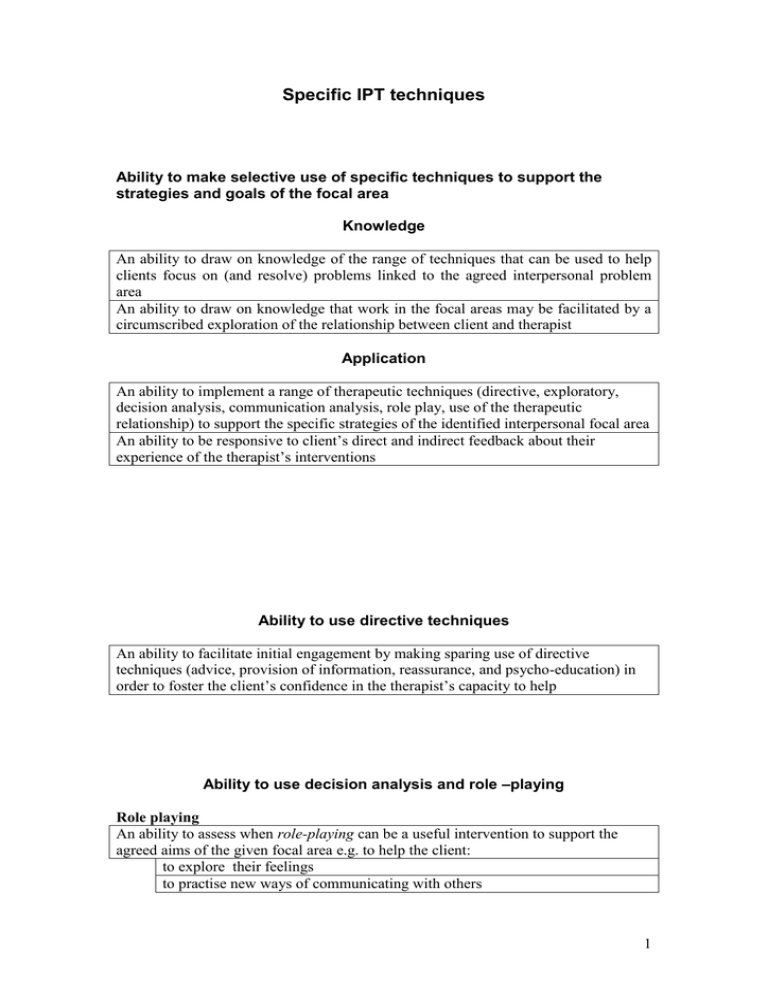
Specific IPT techniques Ability to make selective use of specific techniques to support the strategies and goals of the focal area Knowledge An ability to draw on knowledge of the range of techniques that can be used to help clients focus on (and resolve) problems linked to the agreed interpersonal problem area An ability to draw on knowledge that work in the focal areas may be facilitated by a circumscribed exploration of the relationship between client and therapist Application An ability to implement a range of therapeutic techniques (directive, exploratory, decision analysis, communication analysis, role play, use of the therapeutic relationship) to support the specific strategies of the identified interpersonal focal area An ability to be responsive to client’s direct and indirect feedback about their experience of the therapist’s interventions Ability to use directive techniques An ability to facilitate initial engagement by making sparing use of directive techniques (advice, provision of information, reassurance, and psycho-education) in order to foster the client’s confidence in the therapist’s capacity to help Ability to use decision analysis and role –playing Role playing An ability to assess when role-playing can be a useful intervention to support the agreed aims of the given focal area e.g. to help the client: to explore their feelings to practise new ways of communicating with others 1 Decision analysis An ability to assess when decision analysis can be a useful intervention to support the agreed aims of the given focal area e.g. to help the client: to consider alternative courses of action in order to resolve a problem to evaluate the likely consequences of different possible courses of action An ability to support the client in applying decision analysis outside the therapy setting Ability to use clarification, summaries and questions Clarification An ability to use clarificatory techniques (e.g. asking the client to rephrase what they have said) to: help the client to become more aware of what they characteristically feel and think in relation to others explore particular interpersonal hypotheses highlight contradictions and connections in what the client has said Exploratory techniques An ability to use nondirective techniques, to foster the client’s own sense of competence and autonomy, including: open-ended questions or verbalizations supportive acknowledgement and extension of productive topics refraining from structuring parts of a session to allow the client to elaborate what they are feeling Ability to use communication analysis An ability to engage the client in reporting and reflecting on a recent, difficult exchange/conflict with another person: an ability to elicit a detailed reconstruction of the interpersonal incident, of the accompanying feelings and link to symptoms, and of the implicit and explicit intentions: an ability to help the client to focus on the verbal and non-verbal level of the exchange (e.g. posture, tone of voice) an ability to help the client identify what they would have wanted to 2 communicate, had they felt able to an ability to help the client to identify the contradictory or nonreciprocal role expectations that maintain a difficult interpersonal exchange an ability to help the client to reflect on how the other person might have experienced and understood the interaction Ability to help the client to consider alternative ways of communicating: an ability to help the client to communicate to the other person that they can understand their point of view an ability to help the client try out new, more effective ways of communicating with others in-between sessions An ability to respond empathically and with explicit acknowledgement when the client experiences the therapist as critical or blaming of them for the identified problem Ability to use the therapeutic relationship An ability to identify and provide constructive feedback on recurring interpersonal patterns and communication difficulties when these manifest in the therapeutic relationship: an ability to link these patterns to those that occur with significant others an ability to provide feedback to the client about how they may be coming across to others An ability to help the client explore and try out, within the therapeutic relationship, alternative ways of communicating An ability to assess whether the therapeutic alliance is sufficiently robust to allow for immediate exploration of the interaction between therapist and client 3

